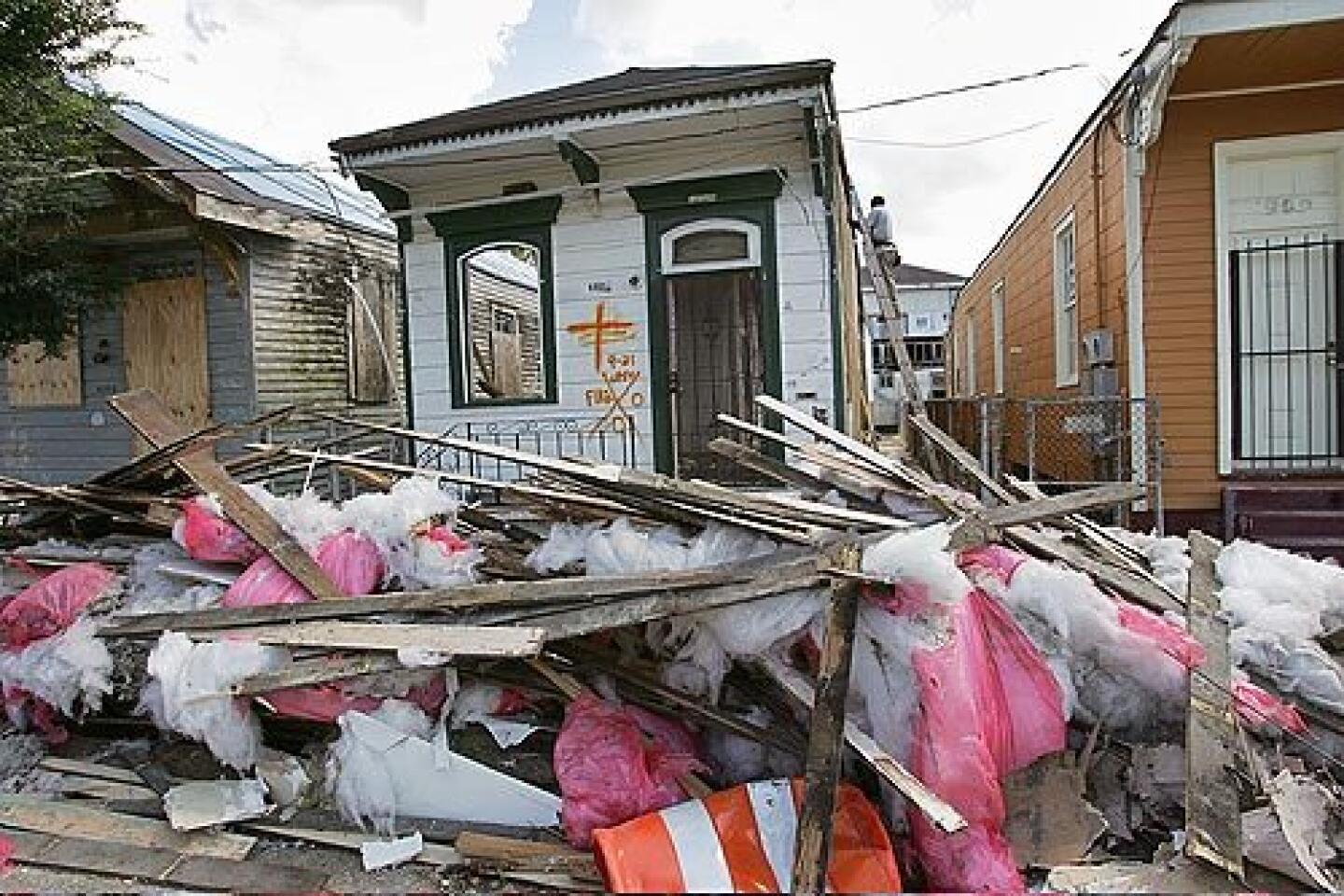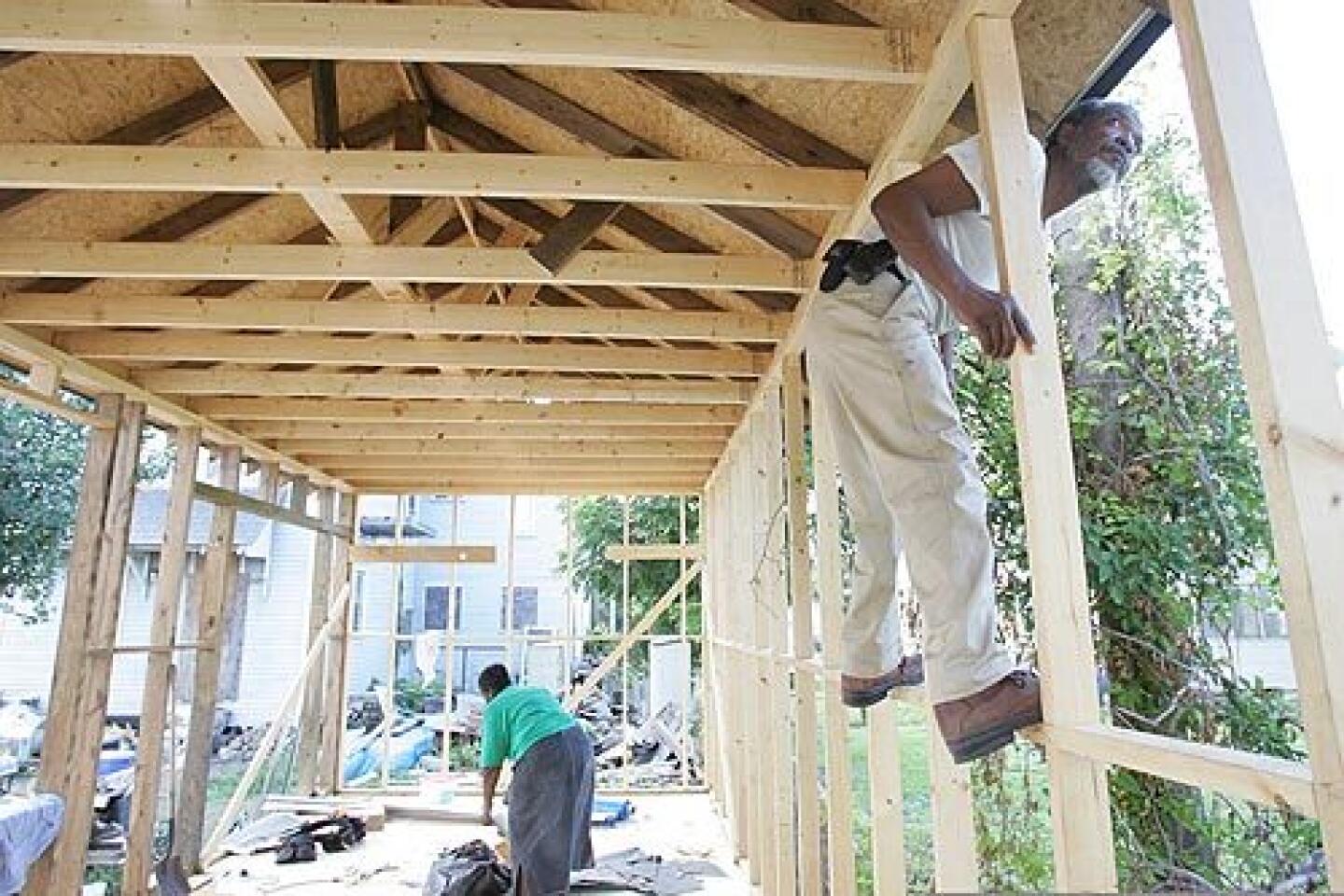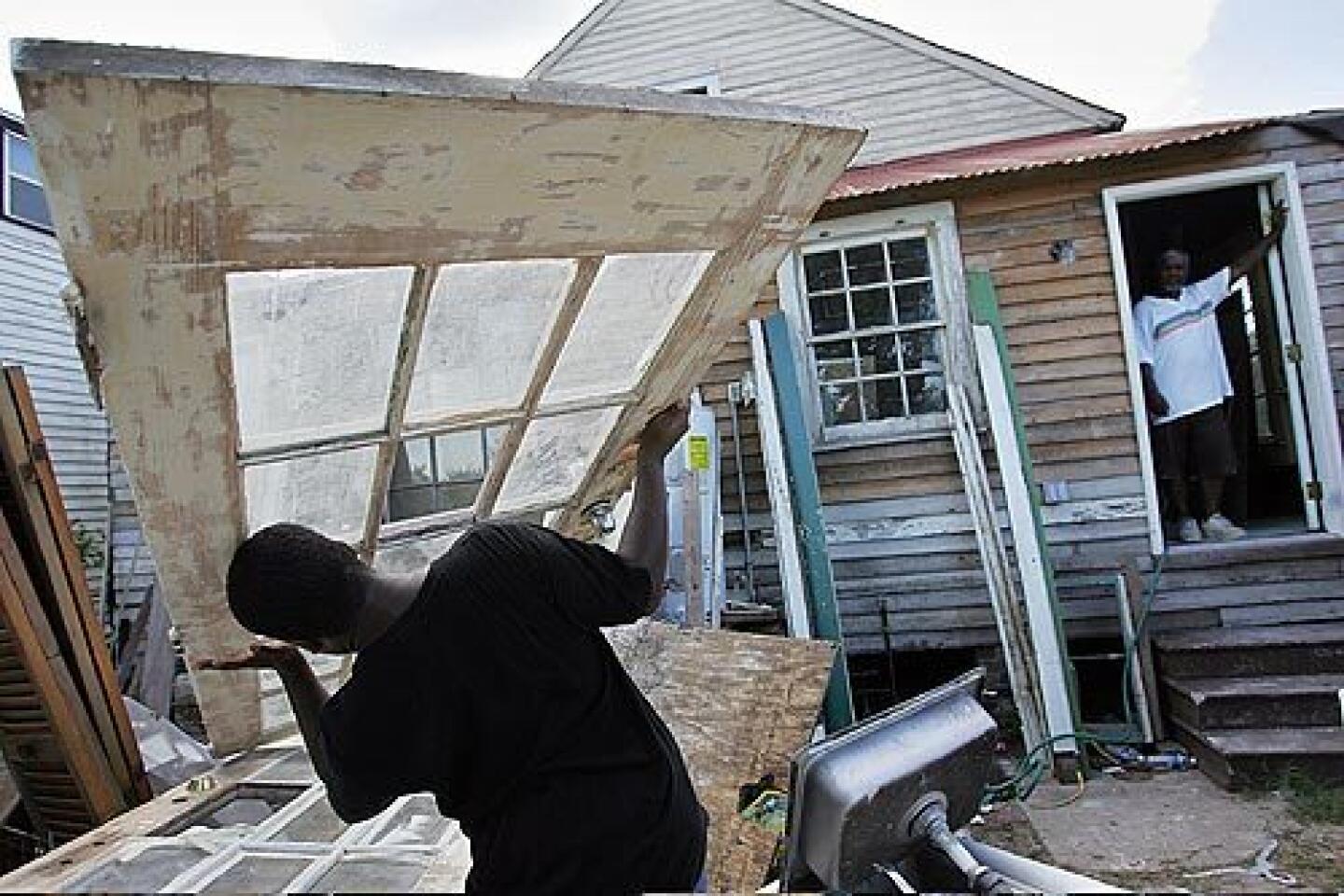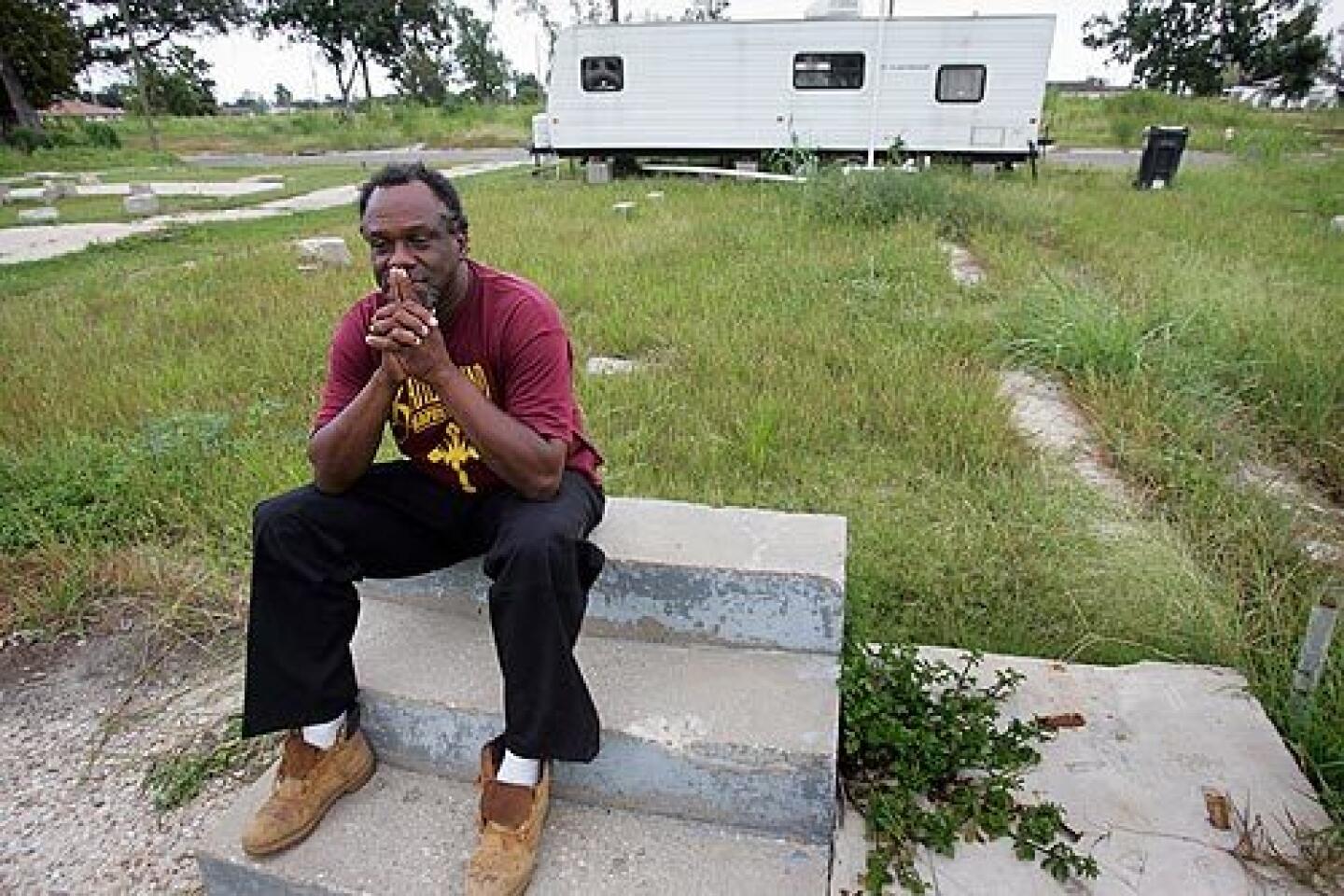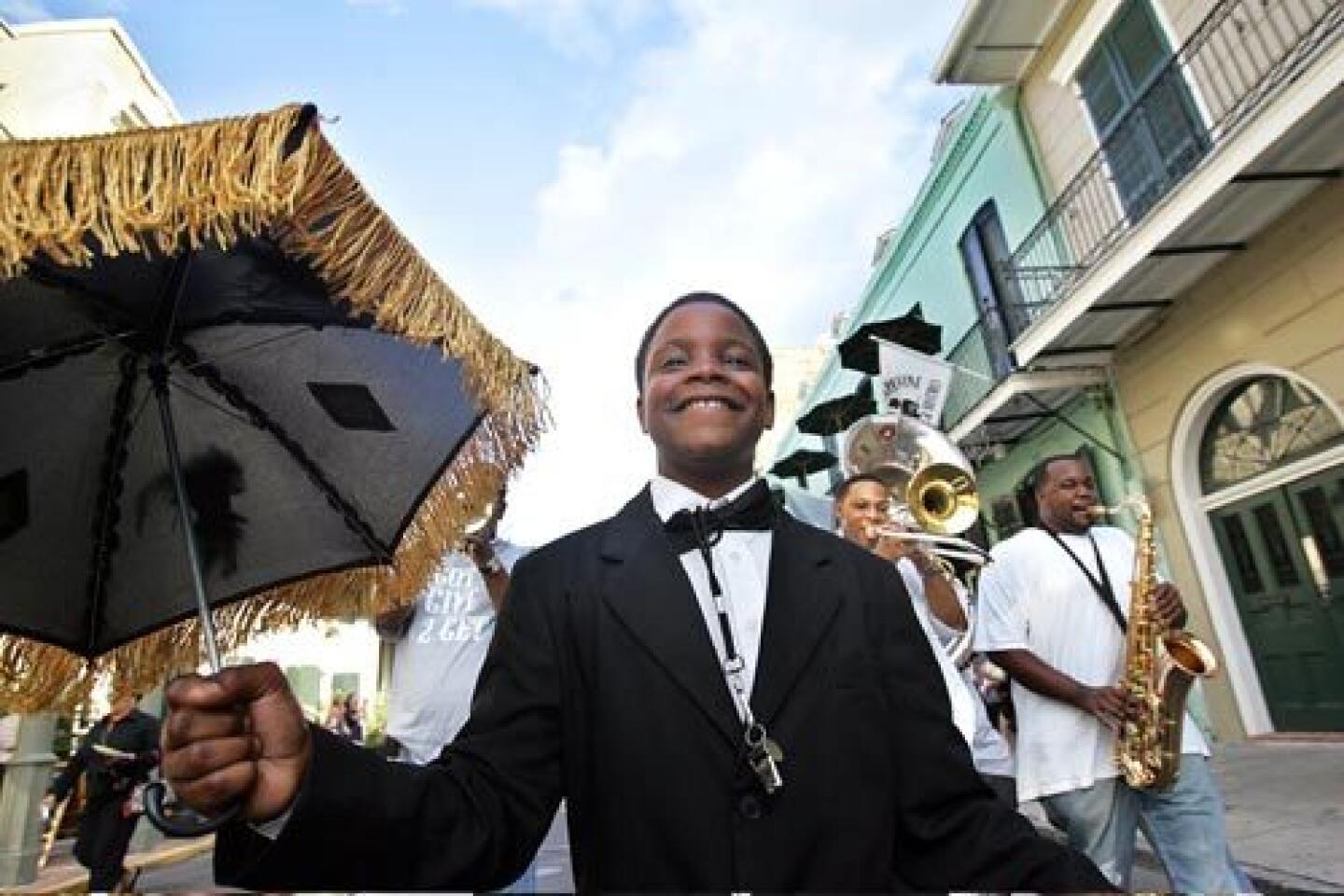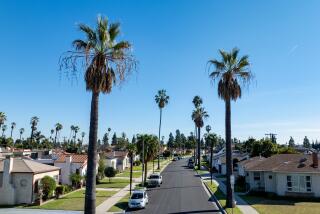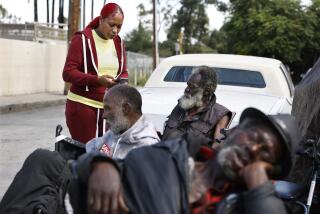After Katrina, hope and despair coexist
The middle-class homeowners who gathered here on a recent weeknight call themselves the Gentilly Civic Improvement Assn. It’s an unexceptional name -- one that belies the epic challenges they face.
The members talked public high schools; they said it’d be nice if Gentilly had one again. They talked about the storm-blasted tree canopy, and playgrounds neglected by a challenged city government. They wondered whether grant money might help. Maybe bake sales.
They talked about forming a security patrol, with each household chipping in $26 a month: That day the police chief had announced that the citywide burglary rate had increased 73% since before Hurricane Katrina. Angele Givens, the association president, liked the patrol idea but raised an interesting issue: “If you own an empty lot in Gentilly right now, you don’t have much impetus to pay it.”
Givens should know. She tore down her house after it was ravaged by Katrina, and she is hoping to rebuild. She isn’t even living in Gentilly these days.
Two years after their city was nearly annihilated by a levee failure, the residents of this middle-class New Orleans neighborhood acknowledged that their surroundings still looked pretty bad. But they also insisted that things were slowly getting better. Just 31% of Gentilly’s 16,000 addresses were reoccupied or renovated as of March, according to a survey by a Dartmouth professor -- but an additional 57% were finally being fixed up.
Private citizens, not the government, deserved the credit, they said -- a source of grim humor among those laboring to mend the neighborhood.
“Of course, we should also thank George Bush, Kathleen Blanco and Ray Nagin,” resident Robert Counce said sarcastically of the president, the governor and the mayor as the meeting wrapped up.
The renaissance in America’s most beleaguered city, such as it is, is a complex, dynamic and messy affair. Progress lives alongside stagnation, hope alongside despair.
Locals seem confused as to how to measure it all. About 274,000 residents are back in New Orleans, which had a population of 455,000 before the storm. Is that reason to cheer, or a troubling sign of a great city halved?
When another elected official is indicted or pleads guilty -- a common occurrence -- is it a setback, or proof that the notoriously unclean milieu of Louisiana politics is finally getting the scrubbing it deserves?
Good times roll on in the famous Creole restaurants of the French Quarter and on the refined streets of Uptown. This unblemished high ground has become known after Katrina as the “Sliver by the River.” But it’s also been called the “Isle of Denial,” because many other neighborhoods, especially ones where African Americans lived, remain urban graveyards pocked with empty lots and moldering shotgun shacks.
More than half the city remains in a state of shocking disrepair, with block after block of historic cottages still bearing the spray-paint scars that showed they had been searched for bodies after the Aug. 29 storm. Progress is evident, however: Freshly renovated houses are increasingly rising amid the decay.
On paper, at least, the Crescent City is plotting an ambitious rebirth, and has finally begun embracing new ideas to repair civic institutions that were broken long before the hurricane. Yet despite promises by countless politicians -- including President Bush, who declared after the storm that “we will do what it takes” to bring New Orleans back -- many feel that the country no longer cares.
“America should be ashamed,” said the Rev. Bill Terry, whose church delivers roses to the mayor and police chief each week to mark the grim tally of homicide victims: more than 125 this year. “The nonprofit organizations have really responded. But all they can do is run the life-support systems to keep the city alive until the real help arrives.”
New Orleans has benefited greatly from the kindness of volunteers, more than a million of whom have come to the Gulf Coast to aid in recovery efforts, according to a federal report.
The Road Home, the government grant program created to help Louisianians rebuild, has not been so giving. It has sent checks to about 43,000 of the 184,000 people who sought assistance, and is $5 billion short of what it needs to help the rest. That’s progress: At the start of the year less than 1% had gotten a dime from the program, which pays up to $150,000.
“So far, the folks who have been most successful rebuilding are those who could borrow more money, who had large insurance settlements, or who had sufficient savings to get underway,” not those who needed the grants, said Andy Kopplin, executive director of the Louisiana Recovery Authority, which oversees the response to Hurricanes Katrina and Rita.
The Army Corps of Engineers has stepped up its efforts to protect this famously low-lying metropolis, set precariously between the Mississippi River and the nation’s second-largest saltwater lake -- and less than 100 miles from the warm-water storm hatchery of the Gulf of Mexico.
The corps, which was heavily criticized after the hurricane for failing to provide the protection it promised, has spent more than $1.7 billion to raise sinking levees, rebuild vulnerable retention walls and install massive floodgates at the points where the city’s three outfall canals join Lake Pontchartrain. That’s made some parts of the city far less likely to take water. But neighborhoods such as Gentilly and the Lower 9th Ward remain extremely flood-prone.
By 2011, the corps hopes to complete a broader flood- protection program. But the plan has yet to secure full funding from Congress, and would not guarantee that New Orleans would be safe when the next Katrina hit. Instead of making more promises, the corps released maps last week to let residents -- and insurers and banks -- see how much each neighborhood could flood so they can decide where to rebuild.
Virginia Bouvier has already made her choice. The 42-year-old nutritionist got 8 feet of water in her Gentilly cottage, which backs up to the London Avenue Canal. She used her insurance settlement to pay off her mortgage. She could have walked away, started over somewhere else. But she didn’t have the heart. The Bouviers came to New Orleans in the mid-19th century from the Bourgogne region of France. Fixing up the old yellow house started to make sense.
“It felt to me like the city was dying,” she said, “and this was like a good friend that I couldn’t turn my back on.”
So this month, as the corps tested the flood wall behind her house, construction workers toiled in the throbbing summer heat, restoring Bouvier’s newly jacked-up cottage. It is now 5 1/2 feet above ground, higher than the base elevations mandated by the government’s flood insurance program. Yet corps maps show it’s in danger of flooding more than 8 feet.
Other safety issues are just as pressing. City leaders are embracing community-oriented policing reforms, and are giving officers raises in hopes of professionalizing a force that’s long been one of the laggards of the South. Still, New Orleans has the highest number of homicides per capita in the country, and rapes increased 44% in the first half of this year compared with the same period last year.
“This is America, and you’d expect better,” Police Supt. Warren J. Riley said. “We’re all struggling to not let our current conditions become the new norm.”
A bold federal prosecutor has forced former presidents of the school board and City Council to admit they took bribes, and is digging deep to expose New Orleans’ dirty politics. Though most cheer those efforts, some citizens are petitioning Bush to pardon former Democratic Gov. Edwin W. Edwards, a living symbol of Louisiana corruption who is serving a 10-year sentence for racketeering and extortion.
“ ‘Let the good times roll’ might be a fun state of mind, but it’s no way to run a government,” said the U.S. attorney for New Orleans, Jim Letten. “Corruption contributed to the shrinking of the city, to the failures of the public school system, to the stagnant economy. In a post-Katrina world, that can’t be tolerated.”
One emerging bright spot is New Orleans’ tourist economy. Visitor figures are approaching 70% of pre-storm levels, said Stephen Perry, president of the New Orleans Convention & Visitors Bureau -- a good sign for a city that relies on its cultural economy for about a third of its revenue. Medical conventions are returning in full force this fall, he said, and next year will bring the Sugar Bowl, as well as college football’s championship and the NBA All-Star Game.
Still, many other sectors of the economy continue to languish. Healthcare has been particularly crippled, and an exodus of high-paid medical professionals has had a ripple effect.
In Lakeview, a middle-class neighborhood just west of Gentilly, the clatter of construction crews is evidence that many houses are being rebuilt. But for-sale signs line many streets.
Real estate agent Sandra Green held an open house last weekend -- but attracted few visitors. The three-bedroom town house, priced to sell at $285,000, was renovated with granite kitchen countertops and hardwood floors.
“In 20 years I have never seen anything like this. We aren’t getting any buyers!” Green said. “Unless we do something about this crime problem, we may get more of these do-gooders straight out of school, but we’re not going to get the families or the businesses.”
Marshall Williams, 51, walked in and looked around. He said he had been living in Boston and Santa Clarita. Asked whether he was coming back, he replied, “I’m making that decision right now.”
“I’d tell you we’re motivated, but everyone says that now,” Green joked. Williams and his agent moved on.
The pitiful pace of progress in many neighborhoods has caused even optimists to rethink the city’s fortunes. Fred D. Smith, a Los Angeles banker, serves as managing director of Hope Coalition America, a group that is providing financial advice to New Orleanians struggling to decide whether to rebuild.
“Unfortunately, and I did not think this a year ago, most of the homes here will never be rebuilt,” Smith said during a march through the Lower 9th Ward to commemorate children who died in the hurricane. “People are weary. They thought that within six to eight months they would be back. Now they’re finding that if they come back, they’ll still be the only person on the block.”
Robert Green, 52, had more reasons than most to not return. Raging floodwaters carried away his family’s Lower 9th Ward home. His granddaughter Shanai and mother, Joyce, died in the storm. Yet he’s back, living in a small trailer surrounded by fields of foot-tall weeds, and he’s sure that someday, his block will teem with life again.
“Every day, I walked this neighborhood with my granddaughters. When I was little, I played football in these streets,” he said as he held a picture of Shanai that he had wrapped around a wooden cross.
“You have to have faith that it will happen.”
A few miles away in Gentilly, there are more tangible pockets of hope. It took a while for Karran Royal to get to hers: After the civic improvement meeting, she drove on quiet blocks lined with houses abandoned or akimbo.
But then she pulled up to her handsome brick house on Soldiers Street, close to the lake. Royal had been back on the property since February 2006, when she moved into a trailer provided by the Federal Emergency Management Agency. Now her flooded house was fixed, and her family was back inside. There was an abandoned house on one side of her house, and an unkempt lot on the other.
Still, there were signs all might be well soon. The trailers parked in the yards across the street meant that those folks hadn’t given up either. The same went for the neighbor a few doors up who’d plopped the big, blocky modular home on his lot.
Gentilly might seem like a work in progress at best -- and an ongoing disaster at worst. But Royal said it was all a matter of perspective: It certainly looked better than a year ago, and that was cause for pride.
“Look,” she whispered in the dark, “at what we’ve done.”
miguel.bustillo@latimes.com
richard.fausset@latimes.com
More to Read
Start your day right
Sign up for Essential California for news, features and recommendations from the L.A. Times and beyond in your inbox six days a week.
You may occasionally receive promotional content from the Los Angeles Times.
